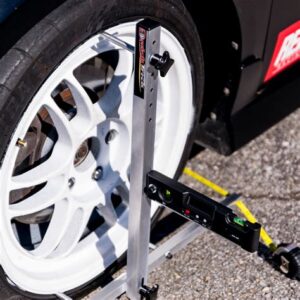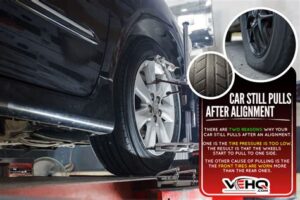Discover the essentials of car alignment, its importance, alignment tools, benefits of using them, and tips for choosing the right tool for your needs.Maintaining the performance of your vehicle goes beyond regular oil changes and tire rotations; proper car alignment plays a crucial role. Car alignment ensures that your vehicle’s wheels are set to the optimal position, enhancing safety and efficiency on the road. In this blog post, we’ll delve into the essentials of car alignment, exploring its significance, the various types of alignment tools available, and the benefits of investing in quality alignment equipment. Whether you’re a DIY enthusiast or a professional mechanic, understanding the right tools to achieve precise alignment can transform your driving experience. Join us as we guide you through the nuances of car alignment tools to help you choose the best options for your needs and keep your vehicle operating at its best.
Understanding Car Alignment
Car alignment refers to the adjustment of a vehicle’s suspension system, which is crucial for ensuring that the tires maintain proper contact with the road. When a car is properly aligned, it improves handling, ensures even tire wear, and enhances fuel efficiency. Neglecting alignment can lead to various issues, including poor driving performance and increased tire replacement costs.
The main components involved in car alignment include camber, caster, and toe. Camber is the angle of the wheels in relation to the vertical axis; if the top of the tire leans inward or outward, it can indicate a misalignment. Castor refers to the angle of the steering axis when viewed from the side; it affects stability and steering. Lastly, toe refers to the angle that the wheels are turned in or out when viewed from above, which can significantly impact tire wear and handling.
Regularly scheduled alignments should be part of your vehicle maintenance to prevent issues related to misalignment. Utilizing alignment tools and equipment can ensure that the adjustments are made accurately. Each adjustment type requires specific tools to measure and correct the angles effectively, contributing to better overall performance and safety on the road.
Importance of Proper Alignment
Proper car alignment is crucial for the overall performance and safety of your vehicle. When the wheels are not correctly aligned, it can lead to uneven tire wear, reduced fuel efficiency, and compromised handling. Here are some key reasons why maintaining proper alignment is essential:
- Enhanced Tire Life: Misalignment causes tires to wear unevenly, which means they’ll need to be replaced much sooner than expected. This increased wear on the tires also leads to added expenses.
- Improved Fuel Efficiency: A vehicle with proper alignment rolls smoothly, allowing for better fuel consumption. Misaligned wheels create extra friction, forcing the engine to work harder, resulting in higher fuel costs.
- Optimal Safety: Driving a car with poor alignment can make it difficult to steer properly, increasing the risk of accidents. Proper alignment ensures that the vehicle responds accurately to steering, enhancing overall safety.
Furthermore, regular alignment checks can help identify potential issues before they escalate, saving you from costly repairs down the line. Many automotive experts recommend having your alignment checked at least once a year or any time you notice your vehicle pulling to one side.
In summary, the importance of proper alignment cannot be overstated. It not only helps in maximizing the lifespan of your tires but also improves the overall drivability and safety of your vehicle. Keeping your car aligned is a simple yet effective way to ensure that your journeys are as safe and efficient as possible.
Types of Alignment Tools
When it comes to maintaining optimal car alignment, having the right tools is essential. Various alignment tools serve different purposes, ensuring that your vehicle’s wheels are properly aligned. Here are the most common types of alignment tools used in the automotive industry:
| Tool Type | Description | Usage |
|---|---|---|
| Camber Gauge | A tool that measures the camber angle of the wheels. | Used to determine how much the wheels tilt inwards or outwards. |
| Caster Gauge | This tool measures the caster angle, which affects steering stability. | Essential for assessing how the wheels maintain their straight line. |
| Toe Plates | Devices that help measure toe angle, determining how much the wheels are pointed in or out. | Used in wheel alignment to ensure the vehicle tracks correctly. |
| Alignment Machine | A comprehensive setup that can measure multiple alignment angles. | Utilized by professionals for precise adjustments and readings. |
| Laser Alignment Tools | Advanced tools that use lasers to provide accurate alignment measurements. | Popular for their ease of use and precision in DIY settings. |
Each of these tools serves a unique purpose, allowing technicians to measure and adjust the alignment angles accurately. Using the correct tools is crucial for maintaining a vehicle’s handling and tire life.
Proper alignment tools not only facilitate accurate measurements but also contribute to overall vehicle performance. Regular checks using these tools can prevent significant issues down the road.
In summary, understanding the types of alignment tools available is important for anyone looking to keep their vehicle in peak condition. By using the appropriate tools, you ensure that your car retains its optimal alignment, providing a smoother and safer driving experience.
Benefits of Using Alignment Equipment
Proper car alignment is crucial for maintaining optimal vehicle performance and safety. Using advanced alignment equipment offers numerous benefits that enhance the driving experience and prolong the lifespan of your vehicle. Here, we outline the key advantages of utilizing alignment tools.
1. Enhanced Safety
Proper wheel alignment reduces the risk of uneven tire wear, which can lead to blowouts and loss of vehicle control. By regularly using alignment equipment, drivers can ensure their vehicles respond effectively to steering inputs, improving safety on the road.
2. Improved Fuel Efficiency
Misaligned wheels can cause increased rolling resistance, forcing the engine to work harder and consume more fuel. By investing in the right alignment tools, you can minimize this resistance, ultimately leading to better fuel economy.
3. Extended Tire Life
When car wheels are properly aligned, tires wear evenly and last longer. This not only saves money on tire replacements but also enhances overall vehicle performance. Routine checks with alignment equipment can significantly extend the lifespan of your tires.
4. Better Handling
Proper alignment improves the responsiveness of your vehicle while driving. With the aid of advanced alignment tools, you can ensure that your car handles predictably, which is essential for both performance and comfort.
Overall, the benefits of using alignment equipment cannot be overstated. From safety enhancements to cost savings on fuel and tires, in
Choosing the Right Alignment Tool
When it comes to ensuring your vehicle runs smoothly, choosing the right alignment tool is crucial. A proper alignment helps improve vehicle handling and extends the lifespan of tires, making the selection process vital for both professionals and enthusiasts alike.
There are various factors to consider when selecting an alignment tool, including the type of vehicle, alignment requirements, and the technician’s expertise. Different tools cater to different vehicle specifications and service needs, which is why understanding these aspects is essential. Here are some key considerations:
- Type of Alignment: Determine whether you need a 2-wheel alignment, 4-wheel alignment, or thrust alignments, as this will influence your tool choice.
- Equipment Accuracy: Invest in tools that offer high precision and reliable readings to ensure accurate alignments.
- Ease of Use: The tool should be user-friendly, allowing for quick setup and adjustments during service.
- Brand Reputation: Consider tools from well-established brands known for their quality and durability in the automotive industry.
Before making a purchase, it’s advisable to read customer reviews and possibly demo the equipment to ensure it meets your operational needs. Selecting the right alignment tool can significantly affect both the effic
Frequently Asked Questions
What are car alignment tools?
Car alignment tools are specialized equipment used to adjust the angles of the wheels on a vehicle to ensure they are perpendicular to the ground and parallel to each other.
Why is wheel alignment important?
Proper wheel alignment enhances vehicle handling, promotes even tire wear, and improves fuel efficiency, ensuring a safer and smoother driving experience.
What are the common types of car alignment tools?
Common types of car alignment tools include laser alignment systems, electronic alignment machines, and traditional toe plates.
How often should you check your car’s alignment?
It’s recommended to check your car’s alignment every 6,000 miles or if you notice uneven tire wear or your vehicle pulling to one side.
Can I align my car’s wheels myself?
While it’s possible to perform a basic alignment at home with the right tools and measurements, professional equipment is recommended for precise adjustments.
What signs indicate that my car needs an alignment?
Common signs include uneven tire wear, steering wheel off-center, pulling to one side, and a vibrating steering wheel.
How does road quality affect wheel alignment?
Poor road conditions, such as potholes or uneven surfaces, can knock a vehicle out of alignment, necessitating regular checks and adjustments.





